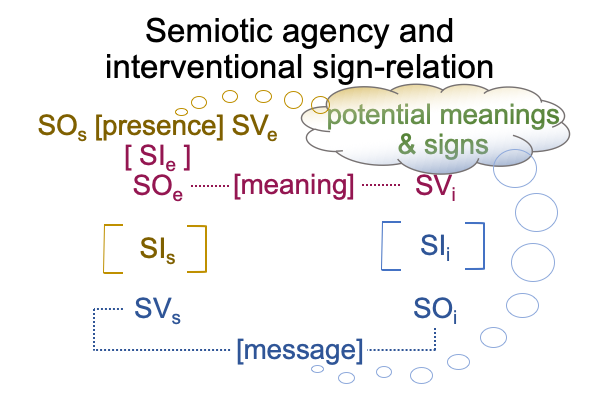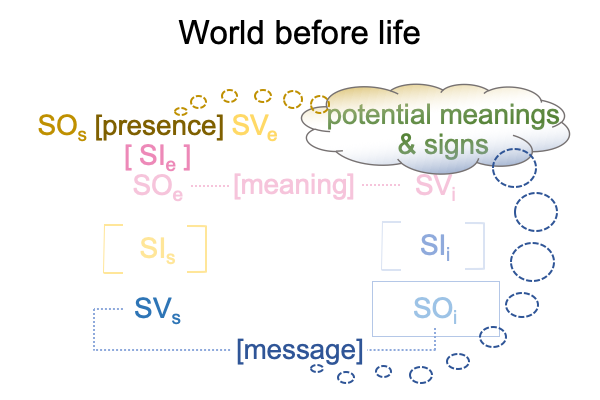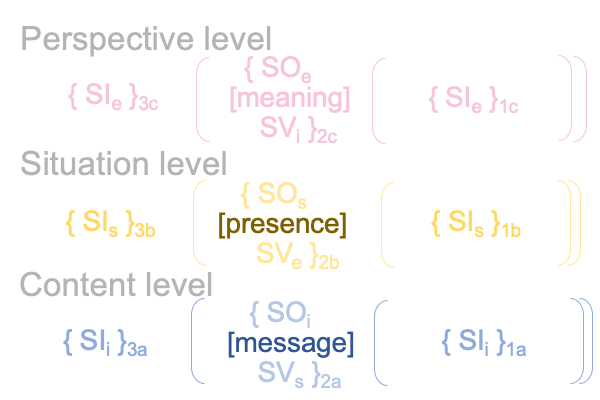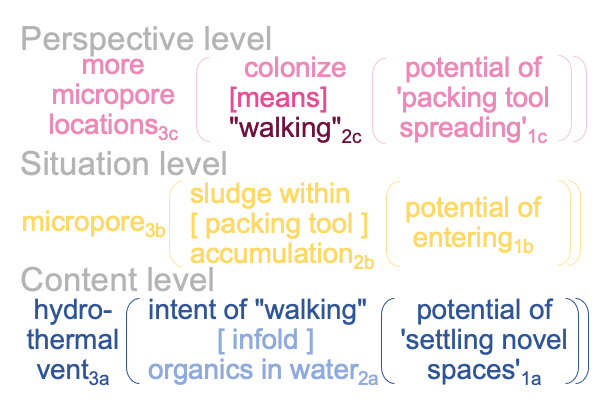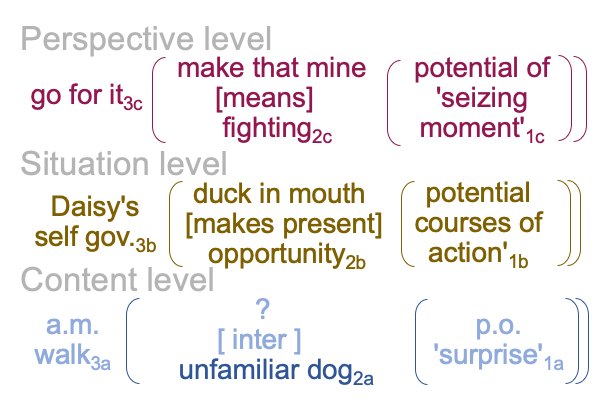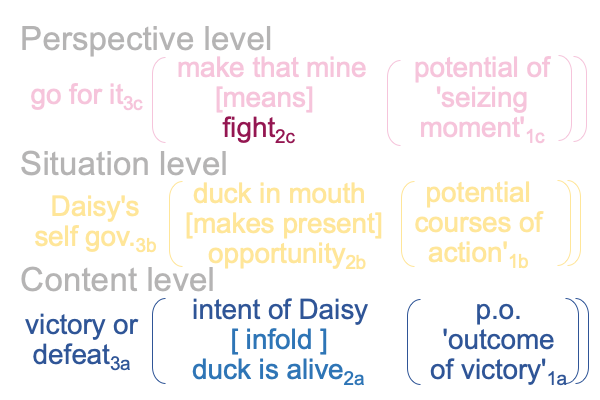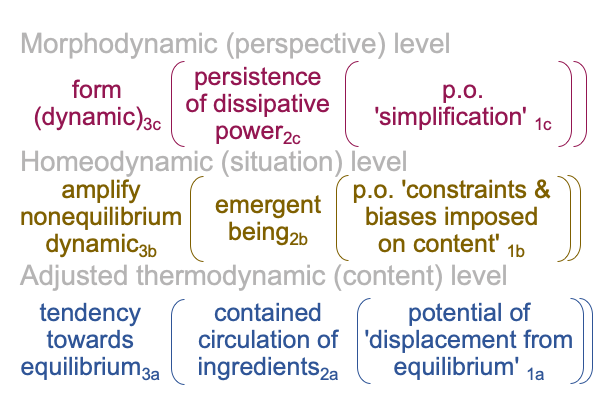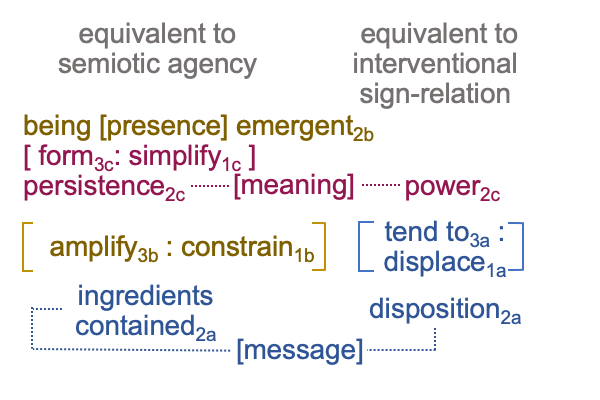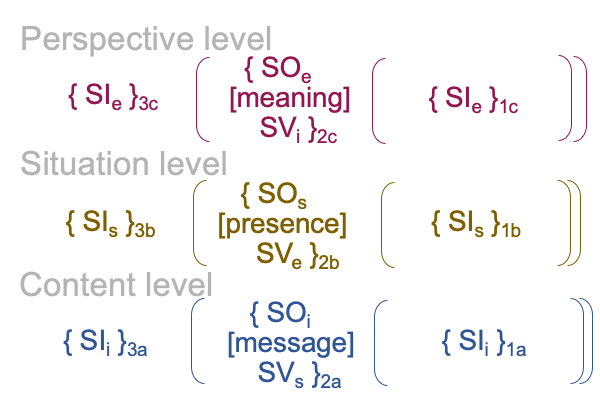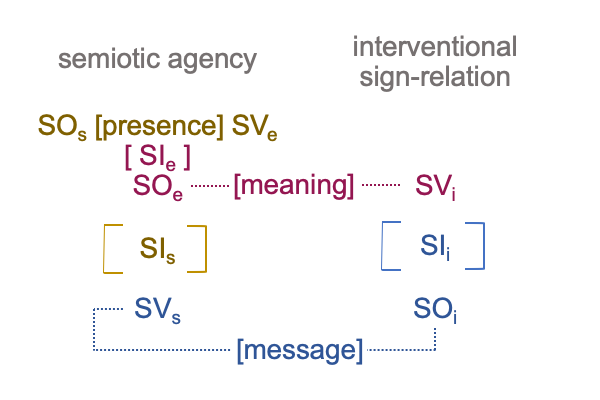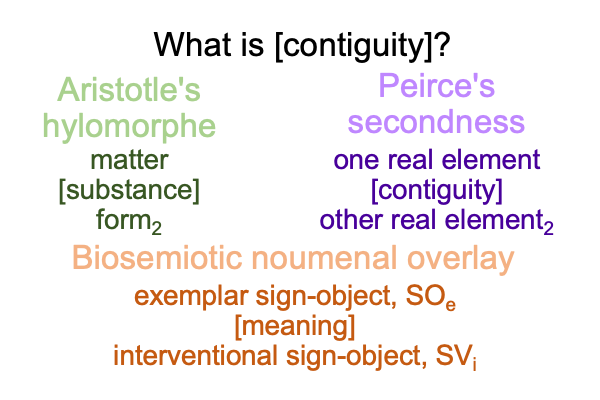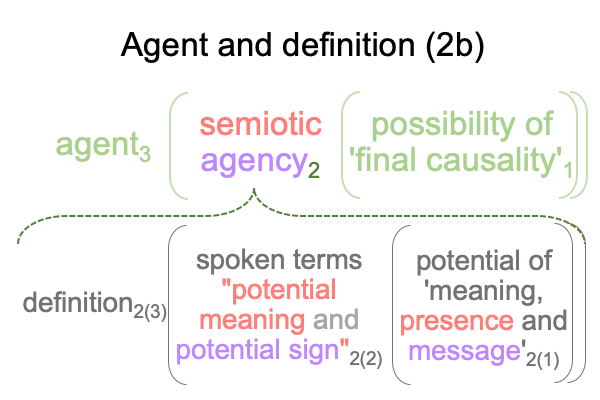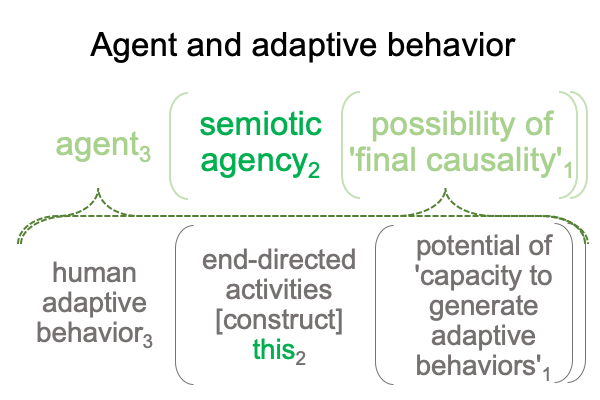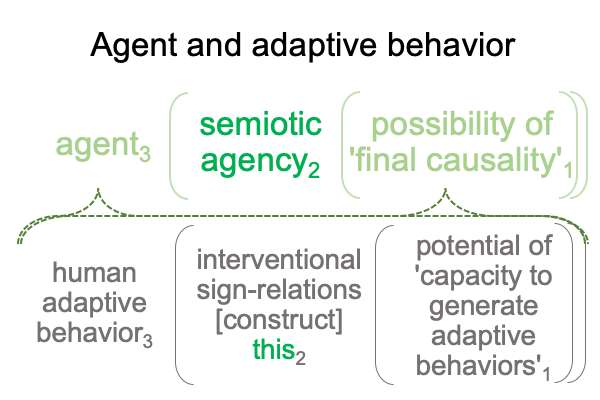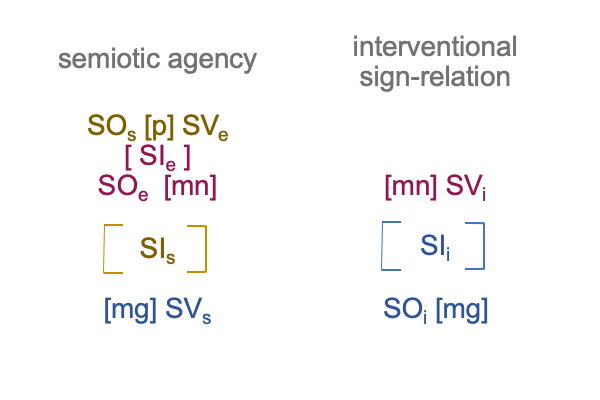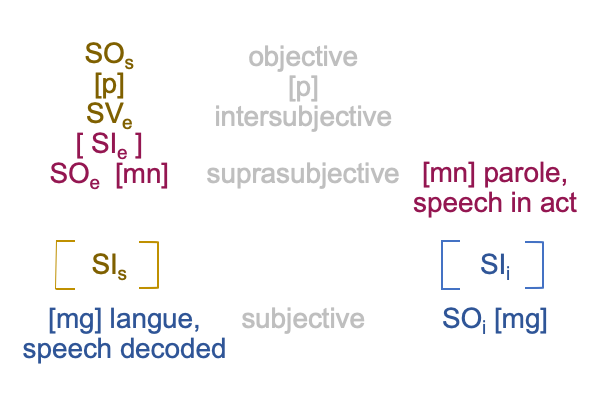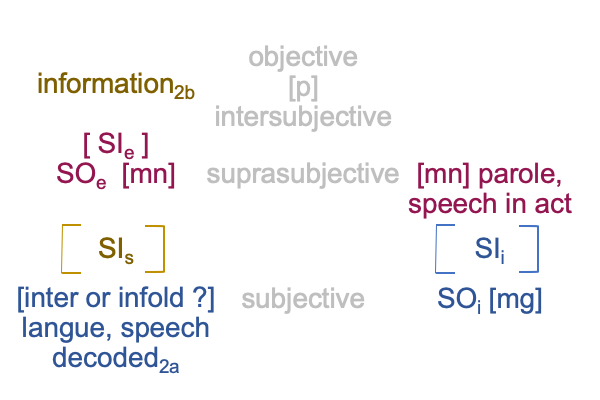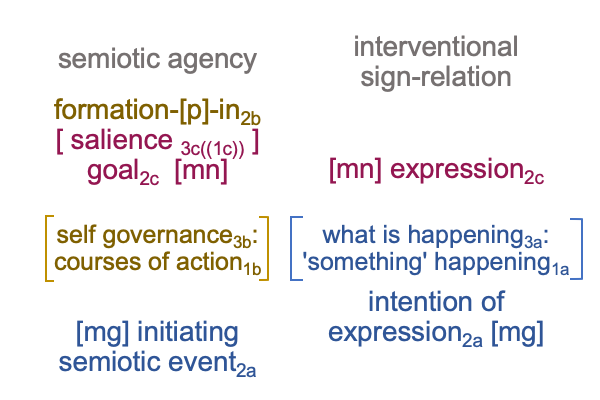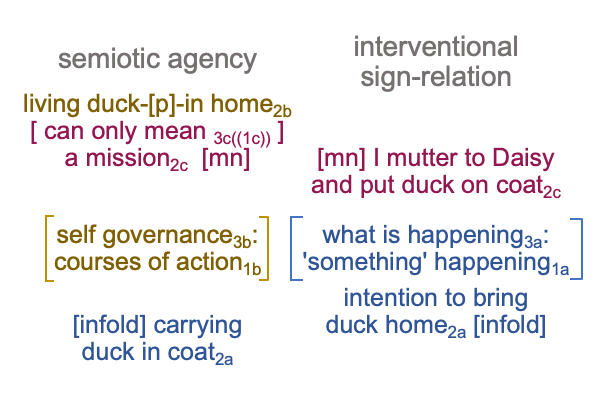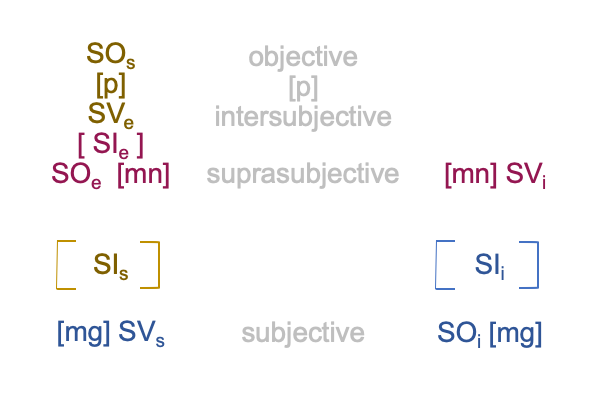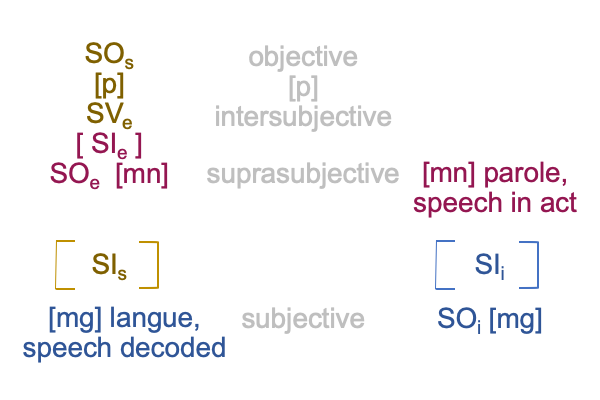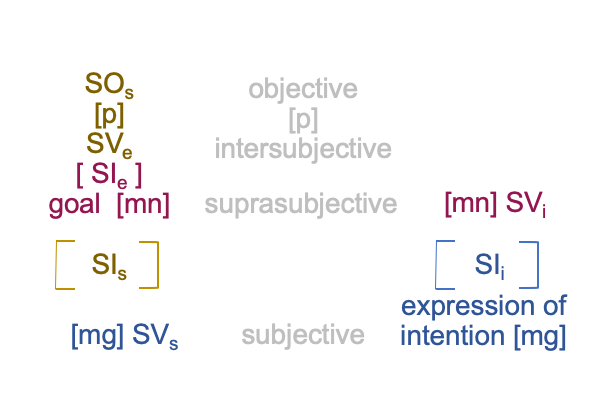Looking at Alexei Sharov’s Chapter (2024) “Semiotics of Potential Meanings” (Part 4 of 8)
0928 At this point, I must keep in mind that there are two other potentials1 (besides presence1) that underlie any spoken term2 in the normal context of definition3. These are not embodied in semiotic agency. In fact these potentials bridge semiotic agency and the interventional sign-relation on the perspective and content levels.
0929 Bridges?
Suspension bridges?
Yes, [meaning] and [message] are contiguities suspended within the perspective-level actuality2c of goal2c and the content-level actuality of real initiating (semiotic) event2a, respectively.
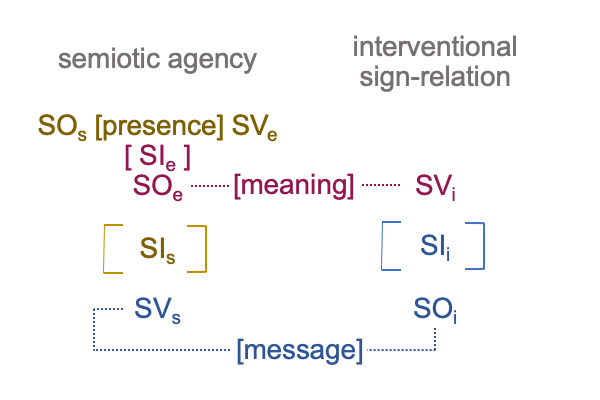
One contiguity spans from semiotic agency to the interventional sign-relation. One contiguity spans in the reverse direction.
0930 In section 17.5, the author notes that the label of “potential meaning” may also be applied to hypothetical things that have not been observed before. Well, let’s forget the qualifier, “hypothetical”, and put in the word, “encountered” for “observed”. “Potential meaning” may be applied to things that we (semiotic agents) have not encountered before.
0931 Daisy knows ducks. She participated in duck hunts on the farm before she broke her leg and ended up as my pet. They were going to shoot her, to put her out of her pain, but I paid the vet bills and took her in. It is funny how things work out that way.
So, when we come upon the unfamiliar dog, standing in a pile of leaves, with that huge ornamental duck in its mouth, I think “That poor ornamental duck.” and Daisy leaps forward and I fail to hold the leash (SVi). Now, the crisis begins. Daisy’s goal2c is obvious, that duck is hers and she [means] to take it (SVi).
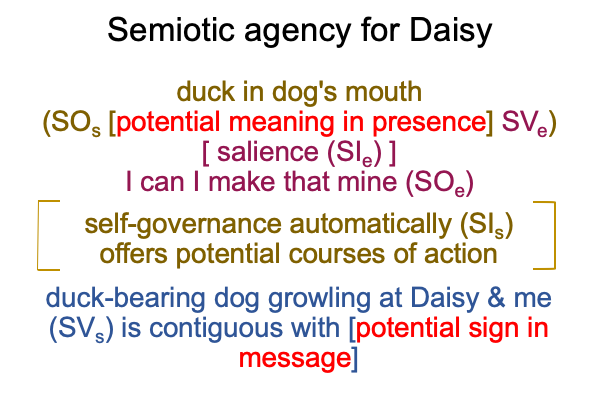
0932 I grab some rocks from a nearby planter and rush to follow along. I don’t know whether Daisy knows that I will fight on her side. But, I figure that, if this fight goes from uncertainty to calamity, I can at least use the rocks as ammunition to protect myself. Oh, forget that, I am fighting for Daisy’s cause.
0933 The dog can’t defend himself and hold the duck at the same time. He cannot make up his mind as Daisy makes a quick pass, nipping his front leg on her way. In the process, he exposes his flank and I throw my first rock, which hits with a resounding thud. The unfamiliar dog looks over at me. What the…? He drops the duck because he expects to engage Daisy. Daisy parks in front of him in the fierce dog sort of way. The prize lies between them. Then, my third rock hits (my second missed completely) and the wayward dog thinks better of it.
0934 The whole incident takes less than two minutes. The defeated dog trots off, looking back to make sure that we are not following. I walk over to Daisy, who appears to be guarding the dead duck.
0935 I pick up the leash and Daisy noses the duck, then looks at me, like she is saying something.
0936 This is a good example for why semiotic agency is full of adaptations.
All species adapt to interventional signs within their Umwelt.
Some of these interventional signs are completely unsettling.
They start with {SOe [meaning] SVi}2c.
0937 Here is a diagram of what happened.
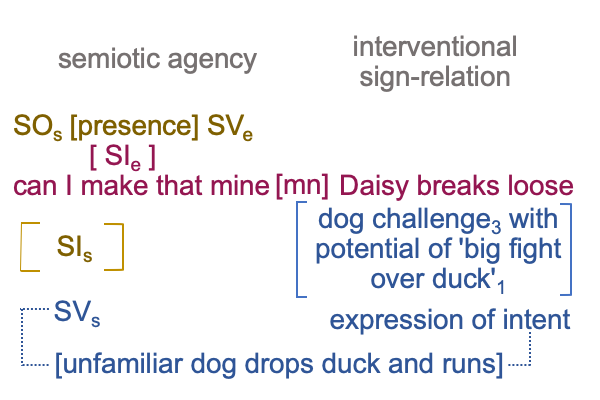
0938 For the interventional sign-relation, Daisy breaking loose2c (SVi) stands for her expression of intent2a (SOi) in regards to the content-level normal context of a dog challenge3a operating on the potential of ‘one or the other getting the duck’1a (SIi).
0939 This opens me to wondering whether the message in {SOi [message] SVs}2a also carries a potential sign.
Does the unfamiliar dog dropping the duck and running off signify Daisy’s intent2a (SOi)?
That answer must be yes.
Daisy seems to be perfectly calm and I am unquestionably unnerved.
0940 Did she get what she wanted?
She presses her nose on the duck once again, then looks up at me.
At that moment, I get the message.
The duck is still alive!

